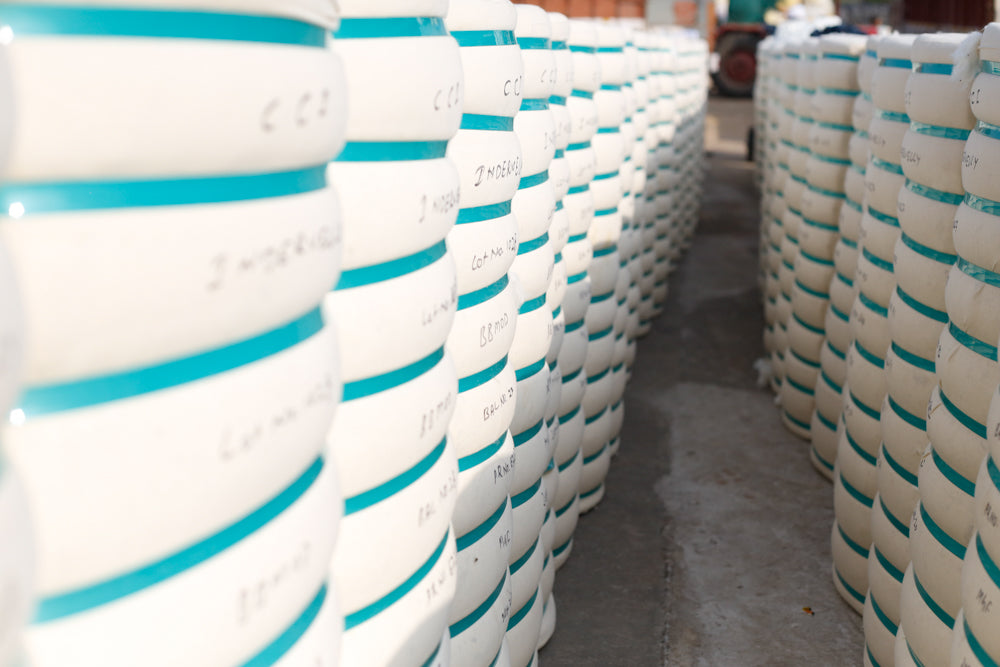The whakapapa of our cotton: From Field to Fibre. Chapter 4

From the village of Gunuur, and the surrounding organic farms, the raw cotton is weighed, collected into sacks and taken by truck to the local ginning mill, around half an hour from the village by road.
Cotton Ginning is the process of separating the cotton fibers from the cotton seeds that they protect.
The 'Gin' is a massive complex where the the freshly picked cotton is taken by the sack for processing.
As we approached the gin, trucks and ox carts lined the road. Bulging and overflowing with cotton. The roadside is scattered with cotton balls, an increasingly white carpet the closer we reached. Men sat in their cabs, atop their carts or leaning against the sides chatting and waiting for their opportunity to deliver their load.


The Gin provides the local area with an important service- serving both organic and inorganic farms. There are designated days for organic cotton processing, before which the entire factory is cleaned and swept free of all cotton so as to avoid contamination. The processes for this are certified by the Global Organic Textile Standard (GOTS) to ensure that they meet the required standard.
Walking in is like approaching a moonscape. Mountains of white cotton are piled high in every direction awaiting processing. The hum of the heavy machinery drones on, and depending on which stage of processing you reach, you'd have to shout over-top the noise to be heard.

It's a noisy, dusty heavy duty process.
Cotton arriving at the gin is delivered into a chute by a digger.

The cotton is then convereyed up inside the factory. A cylinder cleaner uses six or seven rotating, spiked cylinders to break up large clumps of cotton. Finer foreign material, such as soil and leaves, passes through rods or screens for removal.


The gin uses the teeth of rotating saws to pull the cotton through a series of "ginning ribs", which pull the fibers from the seeds which are too large to pass through the ribs.
The cleaned seed is then removed from the gin on a kind of conveyor belt system and piled onto another series of seed 'mountains' outside. Of each cotton boll that is picked, 2-3g of the total 4g is the cotton seed.
These seeds, although 'waste' from the process of extracting the fibres, are not wasted.


This is the mountain of seperated seeds.
They're not suitable for planting for the next season (the second generation of seed grows an inferior fibre with a shorter length (less desirable for making fabric and worth a lot less) and so new seed is purchased each season), but they will instead be pressed for Cottonseed Oil, which is is used for cooking and fuel, as well as cottonmeal which is used organic fertilizer as well as animal food.
Once the cotton is cleaned and brushed free of any contaminants, it is hydraulically pressed into blocks called bales. Once packaged, they slide off, down a ramp toward the awaiting trucks which will take them on to their next stop- the spinning mill- a story for chapter 5.





Leave a comment